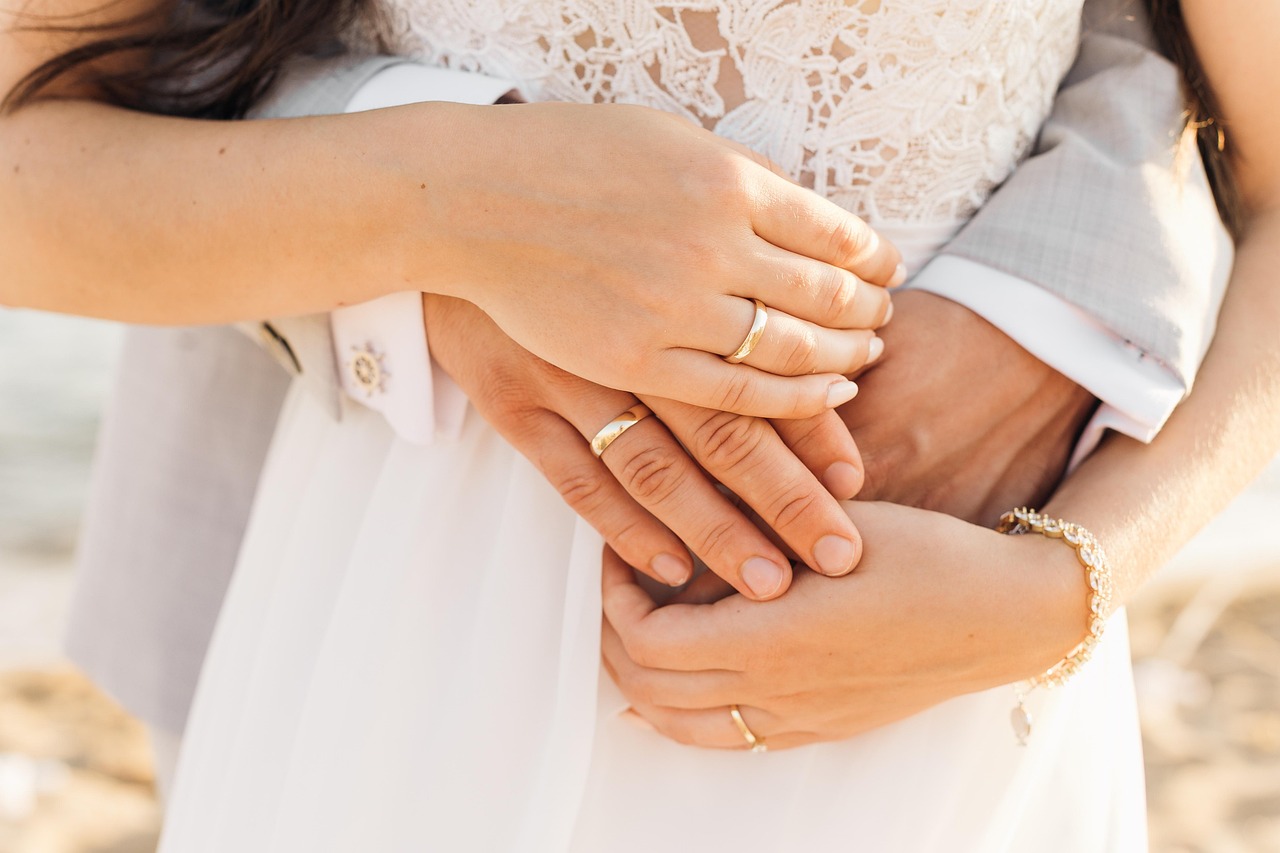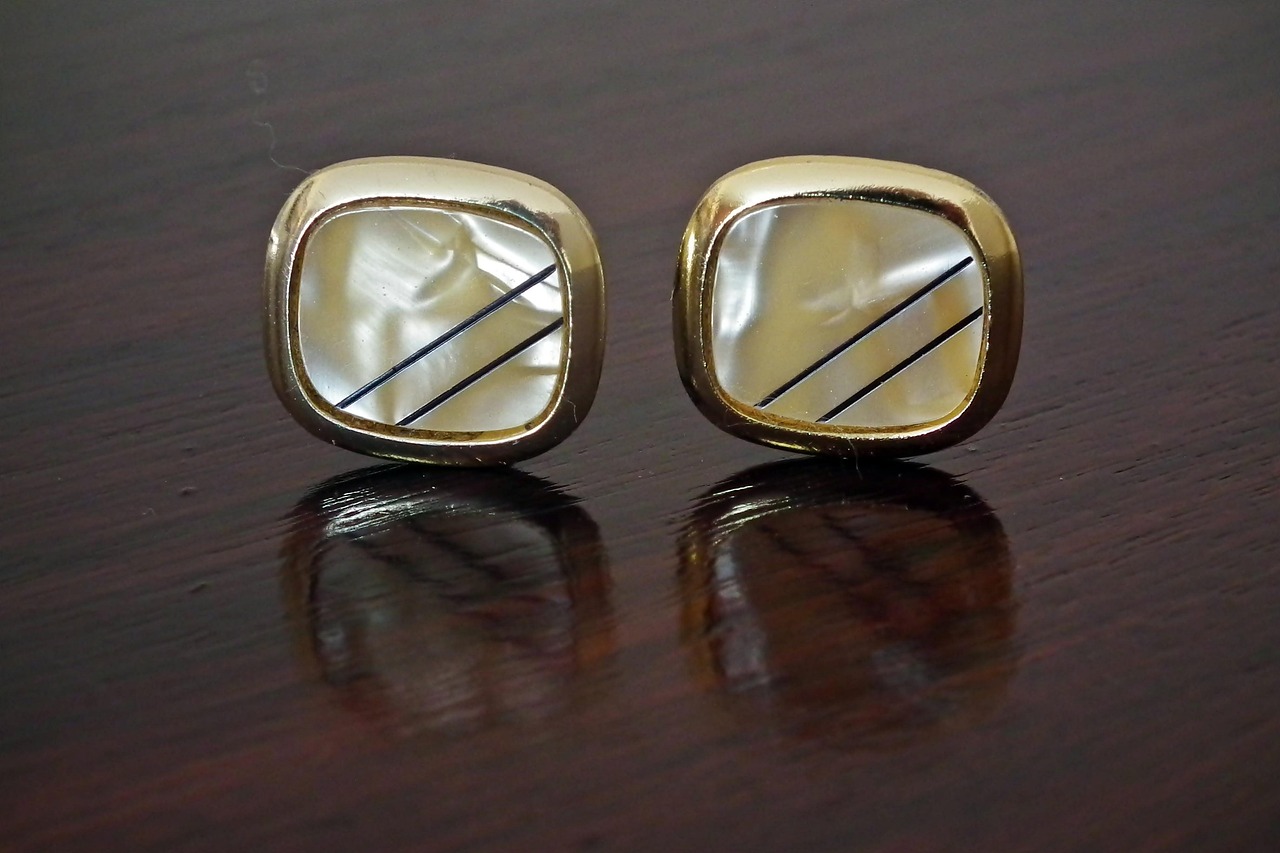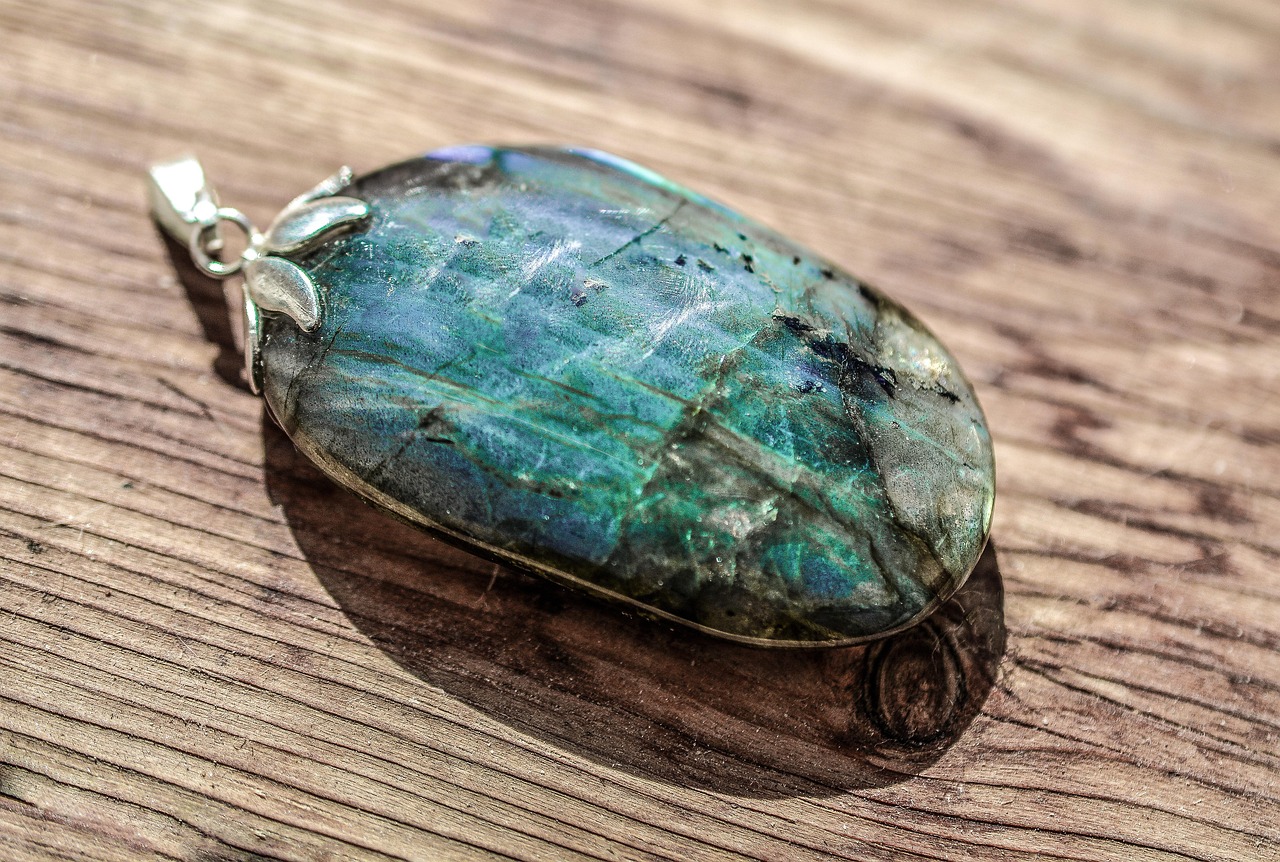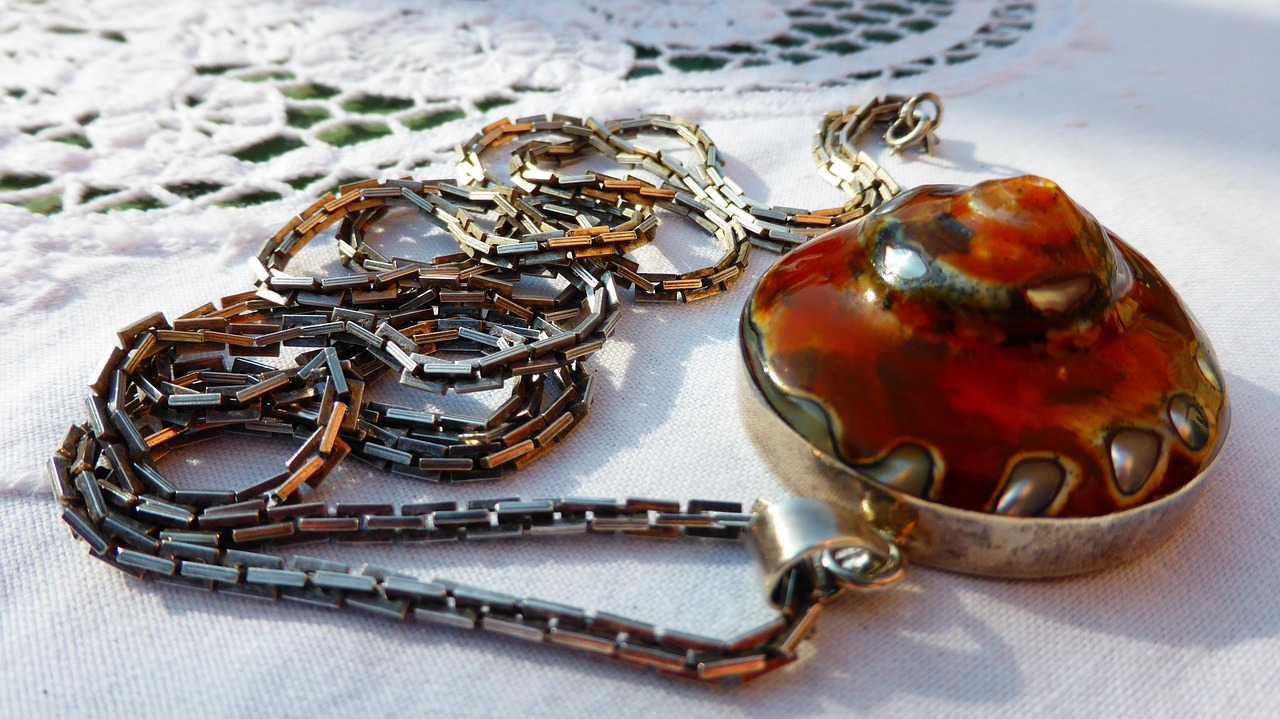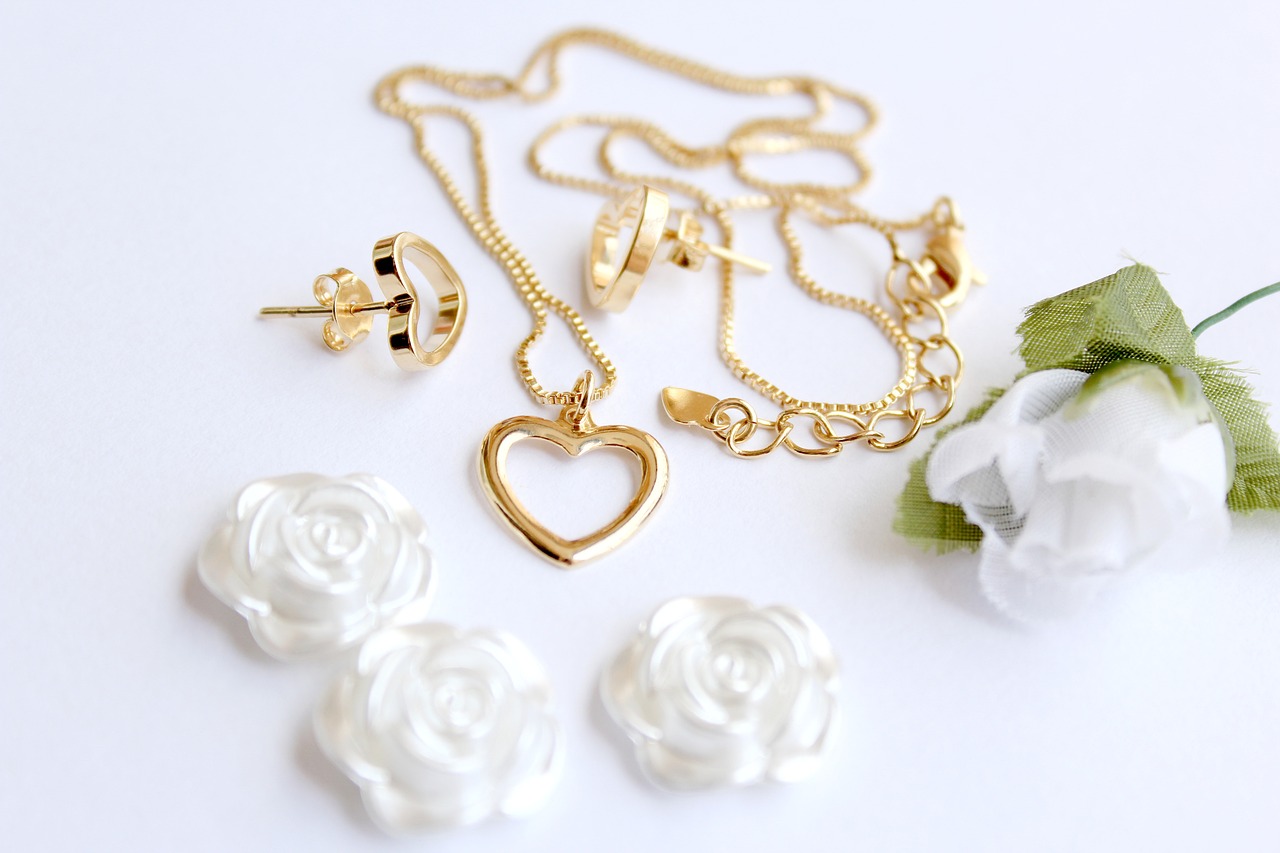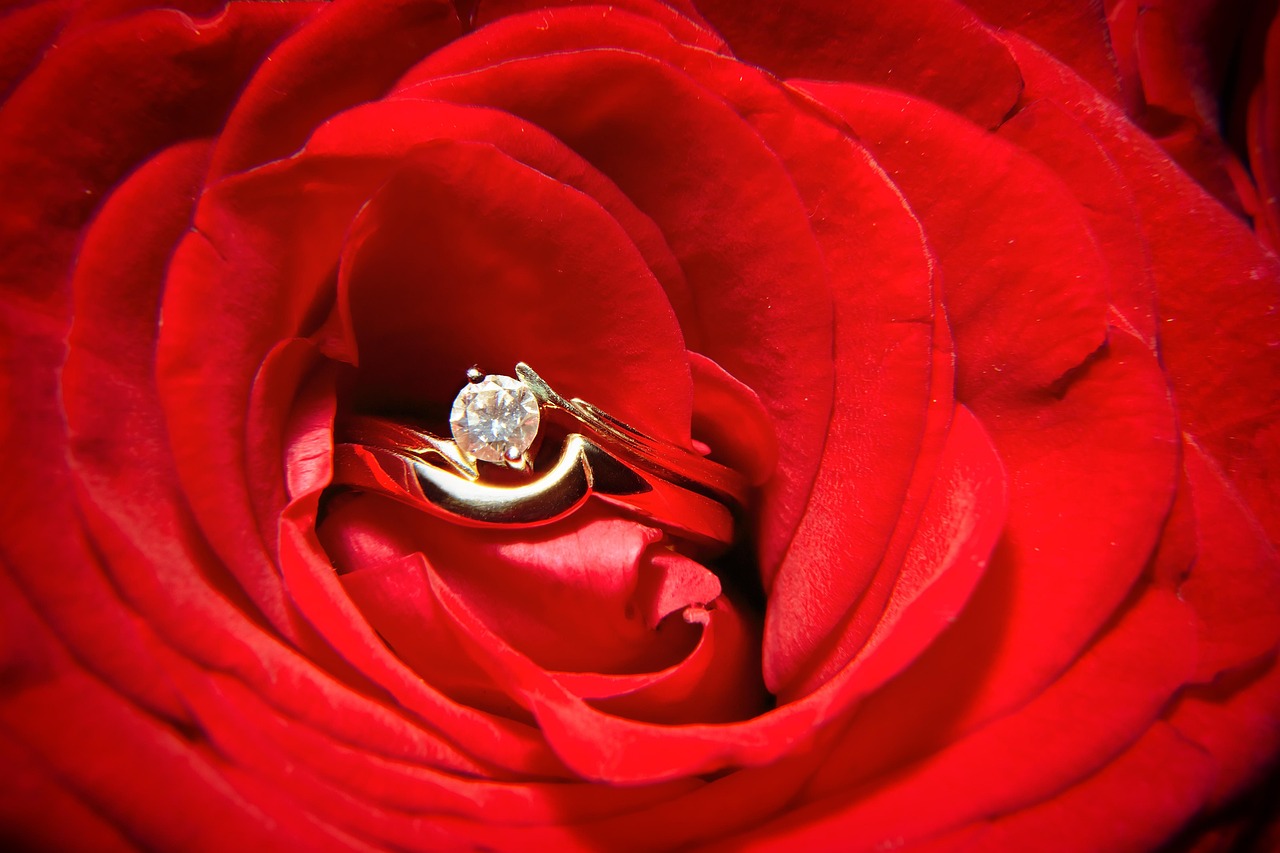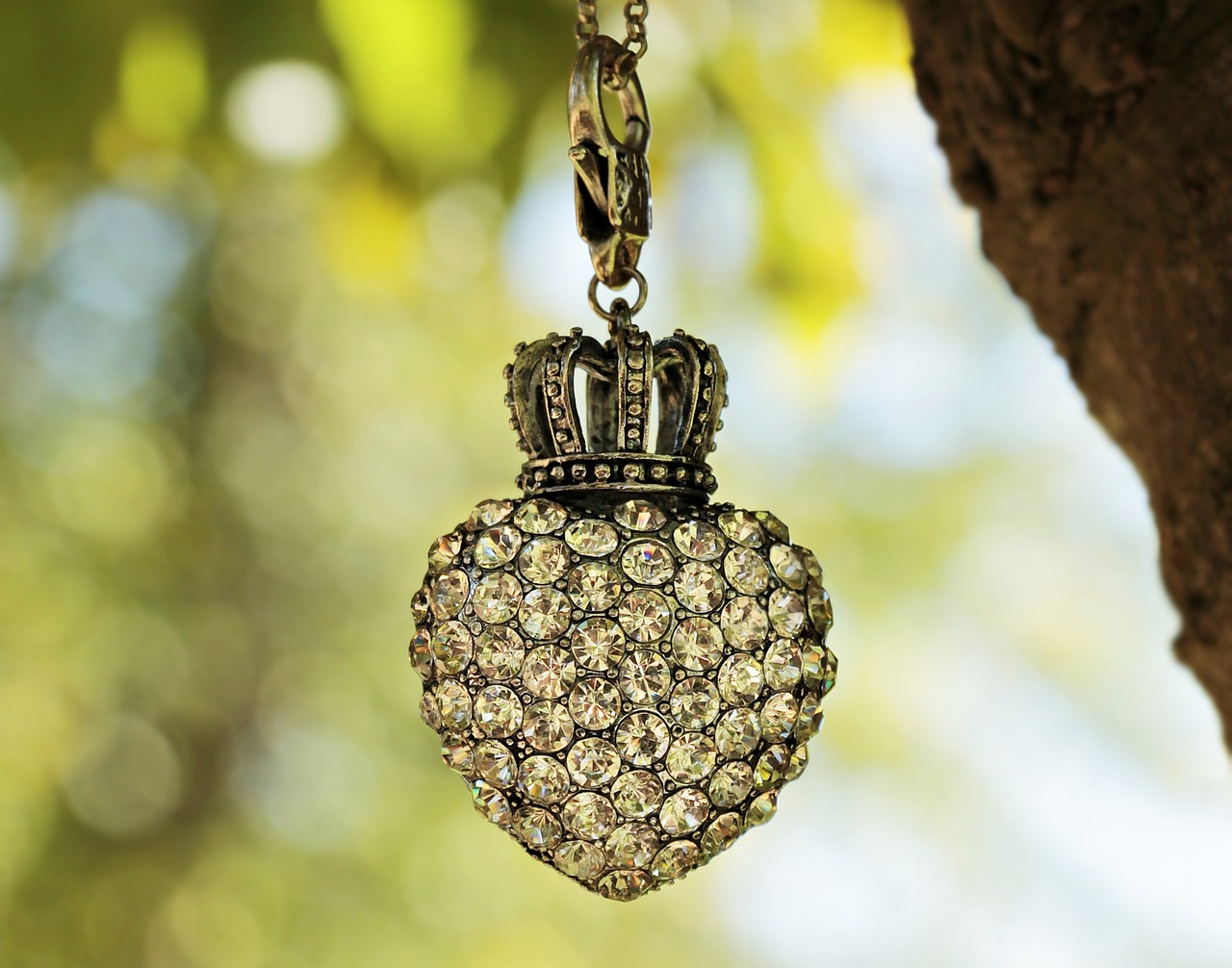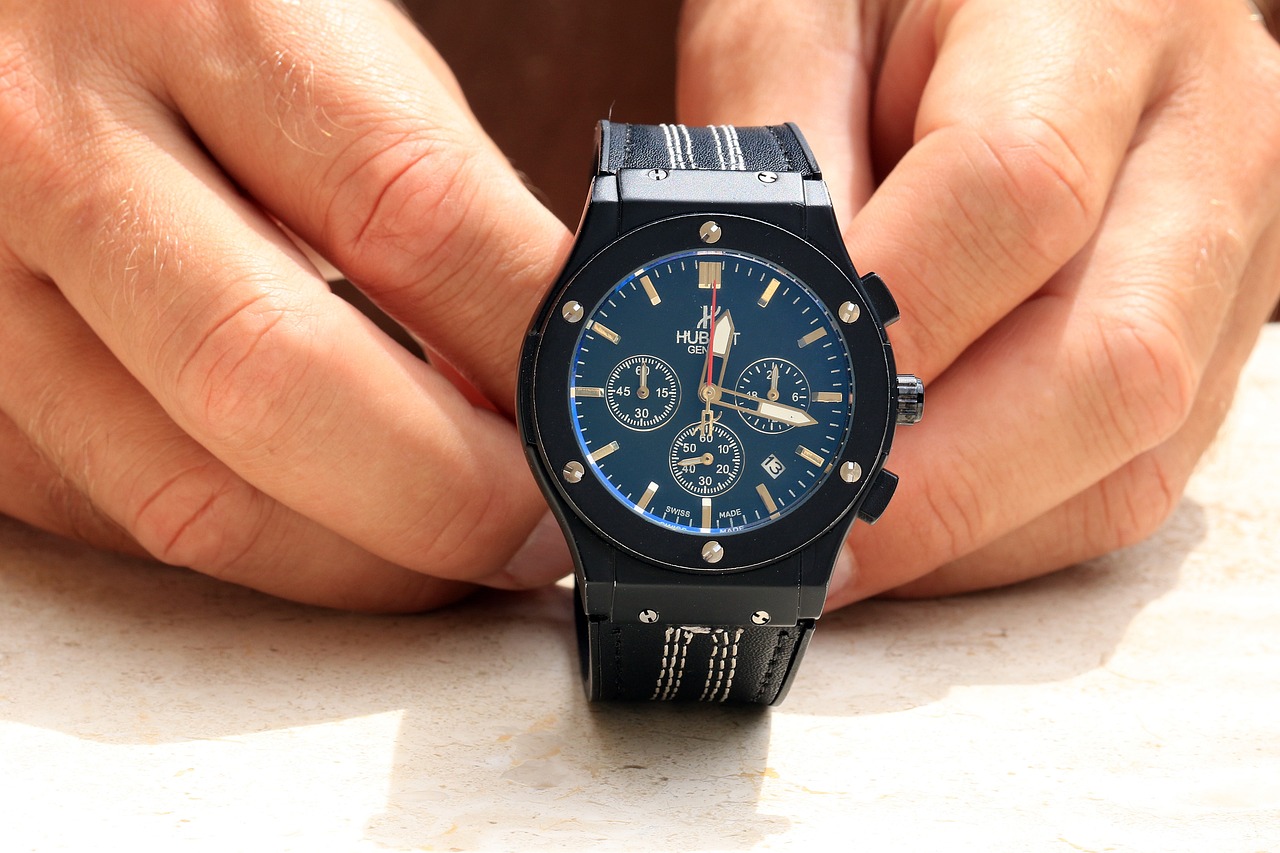Custom jewelry making is an art that allows individuals to express their unique style through personalized designs. By focusing on the best materials and techniques, artisans can create pieces that are not only beautiful but also meaningful. Whether you’re looking to commemorate a special occasion or simply want to wear something that reflects your personality, understanding the essentials of custom jewelry making is key.
When embarking on a custom jewelry project, it’s important to know the primary materials that will form the foundation of your pieces. The choice of materials greatly influences the durability, aesthetics, and overall value of the jewelry.
Precious metals such as gold, silver, and platinum are highly sought after for custom jewelry due to their unique benefits. These metals not only offer longevity but also possess an inherent beauty that elevates any design.
Gold has long been regarded as a classic choice in jewelry making. Its malleability allows for intricate designs, while its resistance to tarnishing ensures lasting beauty. Gold jewelry can be crafted into various styles, making it suitable for any occasion.
Understanding the differences between yellow, white, and rose gold is essential when selecting the perfect hue for your custom piece. Each type offers a distinct aesthetic that can complement different skin tones and personal styles.
The purity of gold is measured in karats, with higher karat numbers indicating a higher gold content. This factor significantly affects both the quality and price of the jewelry, making it an important consideration for buyers.
Silver is another popular choice for custom jewelry, known for its affordability and versatility. It can be crafted into stunning designs, making it suitable for a variety of styles and occasions.
Various techniques can elevate the craftsmanship of custom jewelry. Understanding these methods ensures that each piece is not only beautiful but also unique.
One of the first decisions to make is whether to choose handcrafted or machine-made jewelry. Handcrafted pieces often feature personalized artistry, while machine-made jewelry offers precision and uniformity.
Engraving is a popular method for adding a personal touch to jewelry. Names, dates, or special messages can be etched into the pieces, enhancing their sentimental value and making them truly one-of-a-kind.
Choosing the right gemstones is crucial for adding color and character to custom jewelry. Various factors influence this choice, including personal preferences and the meanings associated with different stones.
Each gemstone carries unique meanings and properties. For instance, diamonds symbolize strength and eternity, while emeralds are associated with rebirth and love. Understanding these meanings can add emotional significance to your designs.
It’s essential to understand the differences between lab-created and natural gemstones. Lab-created stones often offer ethical and cost-effective alternatives, while natural stones provide authenticity and unique characteristics.
The right tools are vital for successful jewelry making. They impact the quality and precision of the final product.
Beginners should start with essential tools such as pliers, cutters, and soldering equipment to create their first custom jewelry pieces. Familiarity with these tools can significantly enhance the crafting experience.
Professional jewelers often utilize specialized tools like laser engravers and polishing machines to achieve high-quality finishes and intricate details. Investing in these tools can elevate the craftsmanship of custom pieces.
Proper care is crucial for maintaining the beauty and integrity of custom jewelry. It ensures that pieces last for generations.
Different materials require specific cleaning methods to avoid damage. For example, gold can be cleaned with a mild soap solution, while silver may need polishing to prevent tarnishing.
Storing jewelry properly can prevent scratches and tarnishing. Using soft pouches or dedicated jewelry boxes can help preserve the beauty and value of your custom pieces over time.
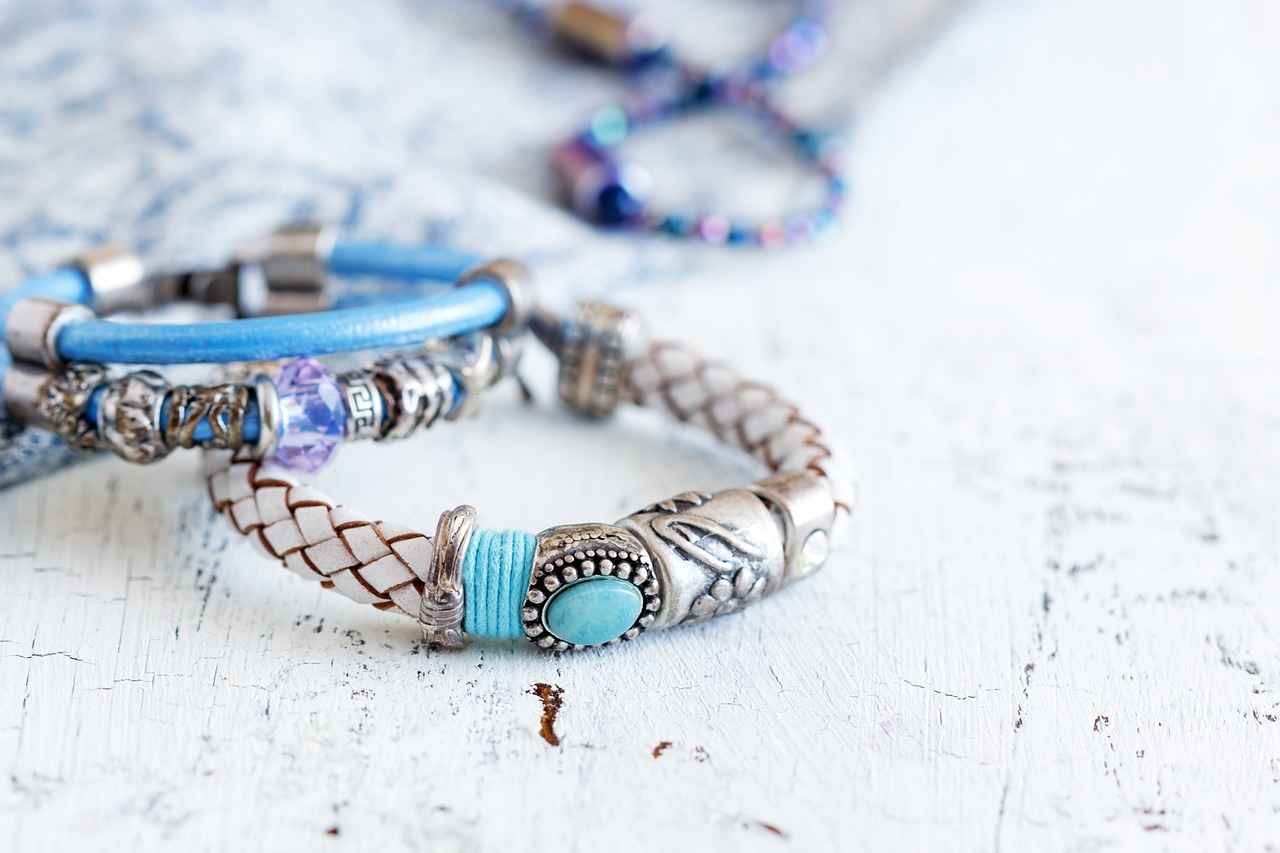
What Are the Essential Materials for Custom Jewelry?
Creating custom jewelry is an art form that requires a deep understanding of the essential materials involved. The choice of materials significantly impacts both the aesthetic appeal and the durability of the finished piece. In this section, we will delve into the primary materials used in custom jewelry making, ensuring that artisans can craft pieces that not only resonate with personal style but also stand the test of time.
When it comes to custom jewelry, the materials selected play a pivotal role in defining the overall quality and character of the piece. Here are some of the most important materials that jewelers consider:
- Precious Metals: Gold, silver, and platinum are the cornerstones of custom jewelry. These metals are celebrated for their longevity and luster, making them ideal for crafting timeless pieces. Each metal has unique properties that can enhance the design.
- Gemstones: The choice of gemstones adds color and personality to custom jewelry. From diamonds to sapphires, selecting the right stone can elevate a piece’s significance and beauty.
- Alloys: Often, precious metals are mixed with other metals to create alloys that improve strength and durability. Understanding these combinations is essential for achieving the desired finish and functionality.
- Enamels: Enameling adds vibrant color and intricate designs to jewelry. This technique can transform a simple piece into a stunning work of art.
- Beads and Findings: These components, including clasps, wires, and decorative beads, are crucial for assembling jewelry. They contribute not only to the functionality but also to the overall aesthetic.
Why is Understanding These Materials Important? Knowledge of these materials allows jewelers to make informed decisions that align with their client’s vision while ensuring the piece’s longevity. For instance, using a high-karat gold can enhance the value and appeal of a piece, while a well-chosen gemstone can carry personal significance for the wearer.
Moreover, the right combination of materials can lead to innovative designs that reflect individual styles. A jeweler who understands the properties of their materials can create pieces that are not only visually stunning but also durable and functional.
In summary, understanding the primary materials used in custom jewelry is crucial for crafting high-quality pieces that resonate with personal style and durability. By selecting the right metals, gemstones, and additional components, jewelers can create unique, meaningful pieces that are cherished for years to come.

Why Choose Precious Metals for Custom Jewelry?
When it comes to custom jewelry, the choice of materials plays a pivotal role in determining the overall quality and appeal of the final piece. Among the various options available, precious metals such as gold, silver, and platinum stand out for their unique characteristics and benefits. This section delves into why these metals are ideal for crafting personalized jewelry that not only looks stunning but also stands the test of time.
Precious metals are renowned for their durability, luster, and versatility. They provide a foundation for creating exquisite pieces that can be cherished for generations. Here are some of the key reasons to consider these metals for your custom jewelry:
- Longevity: Precious metals are less prone to tarnishing and wear, ensuring that your jewelry maintains its beauty over time.
- Aesthetic Appeal: The natural shine and rich colors of gold, silver, and platinum add an element of elegance to any design.
- Value Retention: Precious metals tend to hold their value well, making them a smart investment for the future.
- Hypoallergenic Properties: Many precious metals, especially platinum and certain alloys of gold, are less likely to cause allergic reactions, making them suitable for sensitive skin.
Gold has been a symbol of wealth and beauty for centuries. Its malleability allows jewelers to create intricate designs that are both unique and personalized. Additionally, gold is available in various colors, including:
- Yellow Gold: The traditional choice, known for its warm hue.
- White Gold: A modern option that offers a sleek, contemporary look.
- Rose Gold: A romantic choice with a pinkish tint, perfect for vintage-inspired designs.
Silver is another popular choice for custom jewelry, favored for its affordability and versatility. It allows for a wide range of designs, from simple and elegant to bold and intricate. However, silver requires regular maintenance to prevent tarnishing, making it essential to care for these pieces properly.
Platinum is the epitome of luxury in the jewelry world. Known for its strength and rarity, platinum is an excellent choice for custom jewelry that is both durable and striking. Its natural white sheen complements any gemstone beautifully, making it a favored choice for engagement rings and other significant pieces.
Selecting the right precious metal for your custom jewelry involves considering several factors:
- Personal Style: Think about the colors and styles you typically wear. This can guide your choice of metal.
- Budget: While gold and silver are generally more affordable, platinum is a higher-end option. Consider what fits your budget.
- Purpose: If the piece is for daily wear, durability should be a priority. For special occasions, aesthetic appeal might take precedence.
In summary, choosing precious metals like gold, silver, and platinum for custom jewelry not only enhances the beauty and uniqueness of the pieces but also ensures they are durable and valuable. These metals offer a blend of aesthetic appeal and practical benefits, making them ideal for anyone looking to create personalized jewelry that stands the test of time.
Gold: The Timeless Choice
Gold has long been revered as a timeless choice in the world of jewelry making. Its unique properties make it a favorite among artisans and consumers alike. Not only does gold possess a stunning visual appeal, but it also boasts exceptional malleability, allowing jewelers to create intricate designs that showcase their creativity and skill. This malleability means that gold can be easily shaped and formed, making it an ideal medium for custom pieces that require detailed craftsmanship.
Another remarkable characteristic of gold is its resistance to tarnish. Unlike other metals, gold does not oxidize or corrode, which ensures that jewelry made from this precious metal retains its luster and beauty over time. This quality is particularly appealing for those looking to invest in pieces that will last for generations. The enduring nature of gold jewelry makes it not only a fashion statement but also a cherished heirloom.
When considering gold for custom jewelry, it’s essential to understand the various types available. The three most common types of gold are:
- Yellow Gold: The classic choice, yellow gold is made by alloying pure gold with metals like copper and zinc, giving it a warm hue.
- White Gold: Created by mixing gold with palladium or nickel, white gold has a sleek, modern appearance and is often plated with rhodium for added shine.
- Rose Gold: This trendy option is achieved by combining gold with copper, resulting in a beautiful pinkish tone that has gained popularity in recent years.
Gold purity is measured in karats, with 24 karats representing pure gold. However, most jewelry is made from alloys that contain varying percentages of gold:
| Karat | Gold Content |
|---|---|
| 24K | 100% Gold |
| 18K | 75% Gold |
| 14K | 58.3% Gold |
| 10K | 41.7% Gold |
Choosing the right karat is essential as it affects both the quality and price of the jewelry. Higher karat gold is more malleable and has a richer color, while lower karat gold is more durable and affordable.
Gold’s popularity in custom jewelry can be attributed to its versatility and timeless appeal. It can be crafted into various styles, from classic to contemporary, making it suitable for any occasion. Additionally, gold jewelry can be easily personalized with engraving or the addition of gemstones, enhancing its sentimental value.
Furthermore, gold’s investment potential cannot be overlooked. As a precious metal, gold tends to retain its value over time, making it an excellent choice for those looking to make a long-term investment in their jewelry collection.
In summary, gold stands out as a premier choice for custom jewelry due to its unique properties, variety of types, and investment value. Whether you are looking to create a stunning piece for yourself or a meaningful gift for a loved one, gold jewelry is sure to impress and endure.
Different Types of Gold
When it comes to custom jewelry making, the choice of metal can significantly impact the overall aesthetic and value of the piece. Among the most popular options are yellow gold, white gold, and rose gold. Understanding the differences between these types of gold is essential for selecting the perfect hue to match personal style and the intended design of the jewelry.
Yellow gold is the traditional choice for jewelry, known for its warm, rich color. It is made by alloying pure gold with metals like copper and zinc, which enhance its strength and durability. This type of gold is often associated with classic and vintage designs, making it a popular choice for engagement rings and heirloom pieces.
White gold offers a modern and sleek appearance, often favored for its contemporary aesthetic. It is created by mixing pure gold with metals such as palladium or nickel, giving it a silvery-white finish. White gold is typically plated with rhodium to enhance its shine and durability. This type of gold is especially popular for settings that showcase diamonds and other gemstones, as it allows the stones to stand out beautifully.
Rose gold, also known as pink gold, has gained immense popularity in recent years due to its romantic and vintage appeal. It is made by blending pure gold with copper, which gives it its distinctive pink hue. The varying amounts of copper used can result in different shades of rose gold, ranging from soft blush to deeper reddish tones. This type of gold is often seen in unique and trendy designs, making it a favorite among those looking to express their individuality.
- Consider Your Skin Tone: Yellow gold complements warm skin tones, while white gold suits cooler tones. Rose gold is versatile and flatters a variety of skin tones.
- Think About Your Personal Style: If you prefer classic designs, yellow gold may be the way to go. For a modern look, white gold is ideal, whereas rose gold can add a touch of whimsy and romance.
- Evaluate Durability: White gold is often more durable due to its alloy composition, making it a practical choice for everyday wear.
Each type of gold offers unique benefits that cater to different preferences:
- Yellow Gold: Timeless and classic, it is less likely to cause allergic reactions and is easy to repair.
- White Gold: Provides a modern look and is highly resistant to scratches, especially with rhodium plating.
- Rose Gold: Its romantic hue is perfect for personalized and unique designs, making it a favorite for custom pieces.
In conclusion, understanding the differences between yellow, white, and rose gold is crucial when embarking on a custom jewelry project. By considering factors such as skin tone, personal style, and durability, you can select the perfect gold hue that not only enhances the beauty of your jewelry but also reflects your individuality.
Gold Purity Explained
When it comes to understanding gold purity, one must first grasp the significance of karats. Gold purity is measured in karats, with higher karat numbers indicating a higher gold content. This measurement directly influences both the quality and the price of gold jewelry. But what does this really mean for consumers and jewelers alike?
The term “karat” (often abbreviated as “K”) refers to the proportion of pure gold in an alloy. Pure gold is designated as 24 karats, meaning it is 100% gold without any additional metals. As the karat number decreases, the percentage of gold content in the alloy also decreases. For instance:
- 24K Gold: 100% pure gold
- 18K Gold: 75% gold, 25% other metals
- 14K Gold: 58.3% gold, 41.7% other metals
- 10K Gold: 41.7% gold, 58.3% other metals
The purity of gold is essential for several reasons:
- Quality: Higher karat gold is generally softer and more malleable, making it easier to work with for intricate designs. This quality can enhance the overall craftsmanship of a piece.
- Color: The purity of gold affects its color. For example, 24K gold has a rich yellow hue, while lower karat gold may appear lighter or have different tones depending on the metals mixed in.
- Price: As the karat number increases, so does the price. Higher purity gold is more expensive due to its intrinsic value, making it a significant consideration for buyers.
Choosing the right gold purity depends on several factors:
- Intended Use: If the jewelry is for daily wear, lower karat gold (like 14K or 18K) may be more suitable due to its durability. For special occasions, 24K gold may be preferred for its luxurious appearance.
- Allergies: Some individuals may have allergies to certain metals mixed with gold. In such cases, opting for higher purity gold can minimize allergic reactions.
- Budget: Consider your budget when selecting gold purity. While 24K gold is the most desirable, it may not fit everyone’s financial plan.
Gold is often alloyed with other metals to enhance its properties:
- Yellow Gold: A classic choice, made by mixing pure gold with metals like copper and zinc.
- White Gold: Created by alloying gold with metals such as palladium or nickel, giving it a sleek, modern appearance.
- Rose Gold: This alloy combines gold with copper, resulting in a warm, pink hue that has become increasingly popular.
To maintain the beauty and integrity of your gold jewelry, consider the following care tips:
- Regular Cleaning: Use a gentle soap and water solution to clean your gold pieces, avoiding harsh chemicals.
- Proper Storage: Store your jewelry in a soft cloth or a separate compartment to prevent scratches.
- Avoid Exposure: Keep your gold jewelry away from chlorine and other harsh substances that can damage it.
In summary, understanding gold purity is essential for making informed decisions when purchasing or creating custom jewelry. By considering the karat, quality, and your personal preferences, you can choose the perfect gold for your unique style and needs.
Silver: A Versatile Alternative
When it comes to custom jewelry making, silver stands out as a highly sought-after material due to its remarkable affordability and versatility. This precious metal has been cherished throughout history, not only for its aesthetic appeal but also for its practical applications in various jewelry designs. Whether you’re looking to create elegant pieces for special occasions or casual wear, silver can be molded and shaped to meet your unique vision.
One of the primary reasons silver is favored in custom jewelry is its cost-effectiveness. Compared to gold or platinum, silver offers a more accessible price point, making it easier for artisans and consumers alike to experiment with intricate designs without breaking the bank. This affordability does not compromise its beauty; in fact, silver’s bright, reflective surface adds a stunning shine to any piece.
While gold and platinum are often associated with luxury, silver provides a perfect balance of elegance and practicality. It is lightweight and easy to work with, allowing jewelers to create detailed designs that might be challenging with heavier metals. Furthermore, silver’s versatility means it can be paired with a variety of gemstones, making it suitable for diverse styles—from contemporary to vintage.
- Sterling Silver: Composed of 92.5% silver and 7.5% other metals, typically copper, this alloy is the most commonly used in jewelry making. Its durability and resistance to tarnish make it an ideal choice.
- Argentium Silver: A modern alternative to sterling, Argentium contains a higher percentage of silver and includes germanium, which enhances its tarnish resistance.
- Fine Silver: At 99.9% silver content, fine silver is softer and more malleable, making it suitable for intricate designs but less practical for everyday wear.
To maintain the beauty of silver jewelry, proper care is essential. Regular cleaning with a soft cloth can help remove tarnish and keep pieces looking their best. For more stubborn tarnish, a gentle silver polish may be used. Additionally, storing silver jewelry in a cool, dry place and using anti-tarnish pouches can prolong its shine.
Silver’s malleability allows for a wide range of techniques that can enhance its beauty. Techniques such as engraving, texturing, and stone setting can add unique elements to custom pieces. Engraving personal messages or designs can make silver jewelry even more meaningful, while texturing can create visual interest and depth.
Current trends in silver jewelry include minimalist designs, layering of multiple pieces, and the incorporation of colorful gemstones. The rise of sustainable practices has also led to a demand for ethically sourced silver, making it an appealing choice for environmentally conscious consumers.
In conclusion, silver is a versatile and affordable option for custom jewelry that caters to a wide range of styles and preferences. Its unique properties and adaptability make it a favorite among both jewelers and consumers, ensuring it remains a timeless choice in the world of jewelry making.
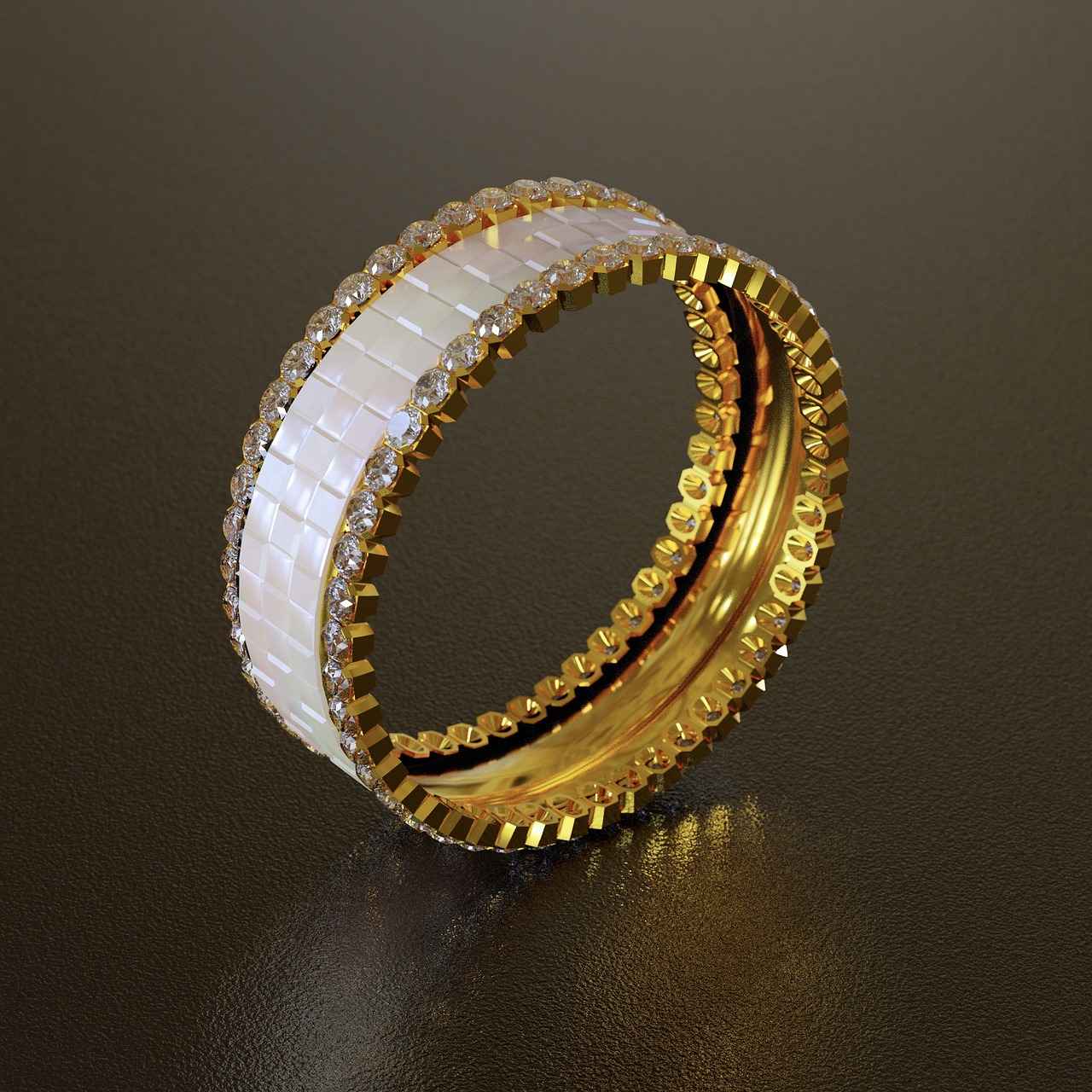
What Techniques Enhance Custom Jewelry Design?
Creating custom jewelry is an art that combines creativity with technical skill. Various techniques can elevate the craftsmanship of custom jewelry, ensuring each piece is not only beautiful but also unique. From traditional handcrafting methods to modern technologies, the possibilities are endless.
To truly appreciate the artistry involved in custom jewelry design, it is essential to explore the techniques that make each piece distinct. Here are some key techniques that can enhance custom jewelry:
- Handcrafting Techniques: Handcrafting allows for a personal touch that machine-made jewelry often lacks. Each piece is shaped and formed by hand, allowing artisans to incorporate intricate details and unique designs. Techniques such as lost-wax casting and metalworking are commonly used to create one-of-a-kind pieces.
- Engraving: Engraving is a popular method for adding a personal touch to jewelry. This technique allows for names, dates, or special messages to be etched onto the surface, enhancing the sentimental value of the piece. Whether done by hand or with a machine, engraving transforms a simple item into a cherished keepsake.
- Stone Setting: The way gemstones are set can significantly affect the overall look of the jewelry. Techniques like prong setting, bezel setting, and pavé setting not only secure the stones but also enhance their brilliance and visibility, making them stand out.
- Texturing: Adding texture to metal surfaces can create visual interest and depth. Techniques such as hammering, sandblasting, and oxidizing can produce stunning effects that catch the light and draw attention to the craftsmanship.
- Mixing Materials: Combining different materials, such as metals, gemstones, and even unconventional elements like wood or resin, can lead to innovative designs. This technique not only adds uniqueness but also allows for personal expression in the jewelry.
In recent years, technology has revolutionized the jewelry-making process. The introduction of computer-aided design (CAD) and 3D printing has allowed designers to create intricate models and prototypes with unparalleled precision. This not only speeds up the design process but also enables complex designs that would be challenging to achieve by hand.
- 3D Printing: This technology allows for the creation of detailed and intricate designs that can be printed in various materials. It opens up new possibilities for customization and innovation in jewelry design.
- Laser Cutting: Laser technology is used for cutting and engraving, providing precision that hand tools cannot match. This technique is particularly useful for creating intricate patterns and designs that enhance the uniqueness of each piece.
- Digital Rendering: Designers can create digital models of their jewelry before producing them physically. This allows for easy modifications and ensures that the final product aligns closely with the original vision.
Personalization is at the heart of custom jewelry design. By incorporating meaningful elements, such as initials, birthstones, or special symbols, the jewelry becomes a reflection of the wearer’s identity and experiences. This emotional connection transforms a piece of jewelry into a treasured keepsake, making the design process even more significant.
Ultimately, the techniques used in custom jewelry design not only enhance the aesthetic appeal but also contribute to the story behind each piece. Whether through traditional methods or modern technology, the craftsmanship involved ensures that every item is a unique expression of artistry and personal significance.
Handcrafting vs. Machine-Made Jewelry
When considering the world of jewelry, one often encounters the debate between handcrafted and machine-made pieces. This decision requires a thoughtful analysis of both options, as each possesses unique advantages that cater to different preferences and values.
Handcrafted jewelry is often celebrated for its personal artistry and uniqueness. Each piece is created by skilled artisans who pour their creativity and passion into every design. This results in jewelry that is not only aesthetically pleasing but also carries a story and emotional weight. The benefits include:
- Customization: Artisans can tailor designs to meet specific customer preferences, ensuring that each piece reflects the wearer’s individuality.
- Quality Craftsmanship: Handcrafted items often showcase superior workmanship, with attention to detail that mass-produced items may lack.
- Support for Local Artisans: Purchasing handcrafted jewelry supports local economies and promotes sustainable practices.
Machine-made jewelry, on the other hand, offers its own set of appealing features, particularly in terms of precision and efficiency. The advantages include:
- Affordability: Mass production significantly lowers costs, making jewelry accessible to a wider audience.
- Consistency: Machine-made jewelry ensures uniformity in design and quality, appealing to those who prefer a classic look.
- Availability: These pieces are typically available in larger quantities, making it easier to find popular styles and trends.
The choice between handcrafted and machine-made jewelry ultimately depends on personal values and preferences. If you value uniqueness and the story behind each piece, handcrafted jewelry may be the better option. Conversely, if you prioritize affordability and consistency, machine-made jewelry could be more suitable.
Interestingly, some jewelers are now blending both techniques to create pieces that benefit from the strengths of each. For instance, a handcrafted piece may incorporate machine-made elements, offering a balance of artistry and precision.
Ultimately, the decision between handcrafted and machine-made jewelry is a personal one. Understanding the benefits of both options allows consumers to make informed choices that resonate with their values and style preferences. Whether you lean towards the unique charm of handcrafted pieces or the reliable consistency of machine-made jewelry, each choice has its own merits that can lead to cherished additions to your collection.
Engraving Techniques for Personalization
Engraving is a powerful technique in the world of custom jewelry, providing a unique opportunity to transform ordinary pieces into extraordinary keepsakes. By etching names, dates, or heartfelt messages onto jewelry, engraving enhances the sentimental value of each item, making it a cherished memento for the wearer. This personal touch not only adds a layer of emotional significance but also allows individuals to express their identity and commemorate special moments in their lives.
Engraving offers several advantages that make it a popular choice for customizing jewelry:
- Personalization: Engraving allows for a unique expression of individuality. Whether it’s a name, a significant date, or a meaningful quote, the possibilities are endless.
- Sentimental Value: Adding a personal message to a piece of jewelry can elevate its emotional significance, turning it into a treasured heirloom.
- Gift Giving: Engraved jewelry makes for thoughtful gifts, perfect for occasions like weddings, anniversaries, or birthdays, showcasing the thoughtfulness of the giver.
There are various engraving techniques used in jewelry making, each offering distinct advantages:
- Hand Engraving: This traditional method involves using a handheld tool to carve designs directly into the metal. It allows for intricate detail and a personal touch, making each piece truly one-of-a-kind.
- Machine Engraving: Utilizing advanced technology, machine engraving offers precision and consistency. This method is ideal for larger production runs, ensuring uniformity across multiple pieces.
- Laser Engraving: A modern technique that uses lasers to etch designs onto jewelry. This method is highly precise and can create intricate designs with ease, making it popular for detailed work.
When selecting an engraving technique, consider the following factors:
- Material: Different materials respond differently to engraving techniques. For instance, softer metals like silver are easier to engrave than harder materials like titanium.
- Design Complexity: If your design is intricate, laser engraving may be the best option. For simpler designs, hand engraving can add a classic touch.
- Budget: Hand engraving is often more labor-intensive and can be more costly than machine or laser engraving. Consider your budget when making a choice.
Before proceeding with engraving, keep these points in mind:
- Font Style: The choice of font can significantly impact the aesthetics of the engraving. Choose a style that complements the jewelry and reflects the personality of the wearer.
- Positioning: Where you place the engraving can affect the overall look. Common areas include the inside of rings, the back of pendants, or along the edge of bracelets.
- Message Length: Longer messages may require smaller font sizes, which could affect legibility. Keep it concise to ensure clarity and impact.
In conclusion, engraving is an invaluable technique in custom jewelry making, allowing for a personal touch that resonates with the wearer. By understanding the various methods and considerations involved, individuals can create meaningful pieces that celebrate their unique stories and memories.
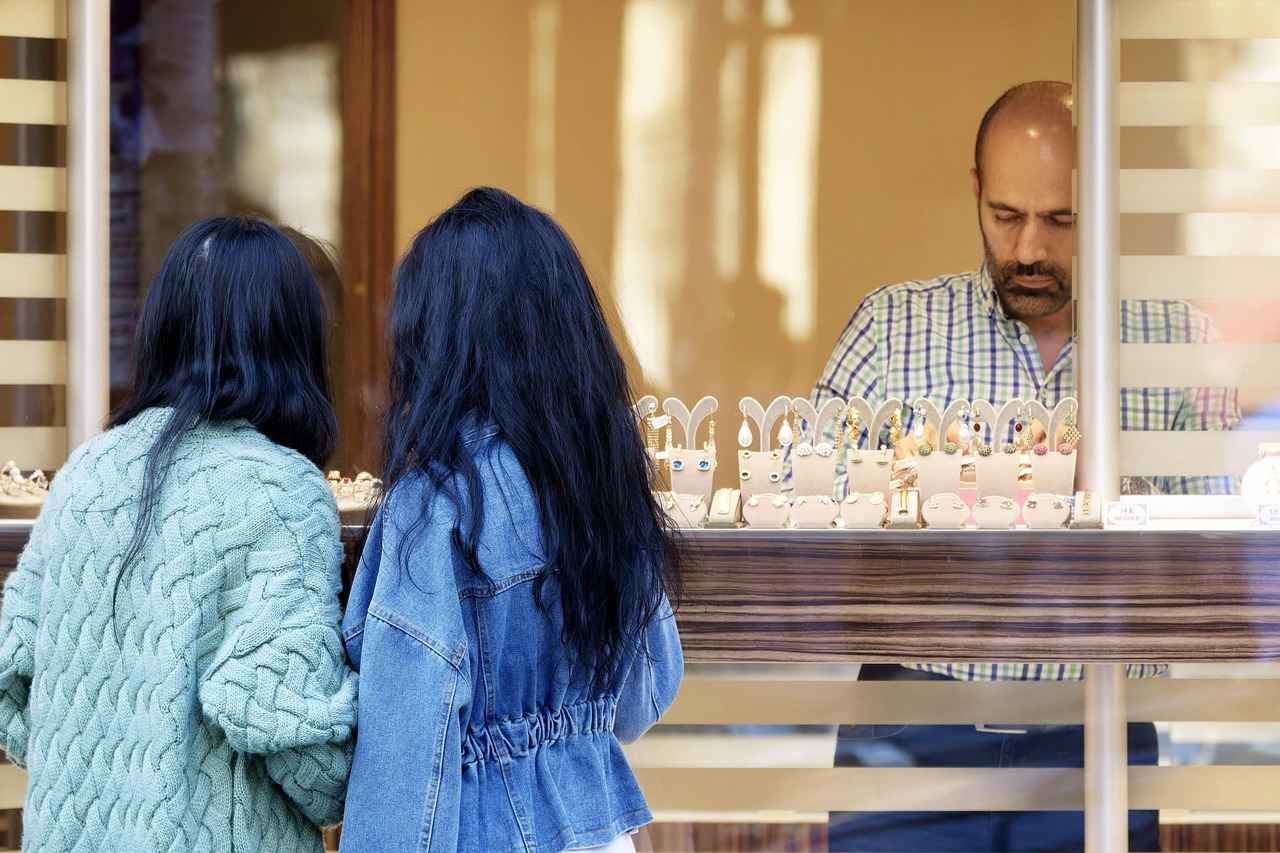
How to Select Gemstones for Custom Jewelry?
Choosing the right gemstones is essential for adding color and character to custom jewelry. With a plethora of options available, understanding the various factors that influence this choice can significantly enhance the overall aesthetic and emotional value of your pieces.
When selecting gemstones, several critical factors come into play:
- Color: The color of a gemstone can evoke different emotions and complement various styles. Consider the hue, saturation, and tone that best fits your design.
- Clarity: The clarity of a gemstone refers to the presence of internal or external flaws. Higher clarity often translates to a more valuable stone, enhancing its visual appeal.
- Cut: The cut of a gemstone affects how it reflects light. A well-cut stone will sparkle more, adding to the allure of your custom jewelry.
- Carat Weight: This measures the size of the gemstone. Larger stones can make a bold statement, while smaller stones can be used for subtle elegance.
- Durability: Consider the hardness and toughness of the gemstone, especially if the jewelry will be worn frequently. Some stones are more prone to scratching or chipping.
Several gemstones are favored in the world of custom jewelry due to their beauty and significance:
- Diamond: Known as the king of gemstones, diamonds symbolize eternity and are perfect for engagement rings and heirloom pieces.
- Sapphire: Available in various colors, sapphires are often associated with wisdom and nobility. Their durability makes them suitable for everyday wear.
- Emerald: Renowned for their vibrant green color, emeralds symbolize rebirth and love, making them a popular choice for sentimental pieces.
- Ruby: The deep red hue of rubies signifies passion and energy. They are often used in statement jewelry.
- Amethyst: This purple gemstone is known for its calming properties and is often chosen for its stunning color and affordability.
Understanding the difference between lab-created and natural gemstones is crucial for making an informed decision:
- Lab-Created Gemstones: These stones are made in controlled environments and can be more affordable. They are chemically identical to natural stones but may lack the unique imperfections that characterize natural gems.
- Natural Gemstones: These stones are mined from the earth and often carry unique characteristics and histories. They can be more expensive due to their rarity and the processes involved in obtaining them.
Once you’ve selected your gemstones, consider how to integrate them into your jewelry:
- Setting Styles: The choice of setting can enhance the beauty of the gemstone. Options include prong, bezel, and pave settings, each offering a different aesthetic.
- Color Combinations: Pairing gemstones with complementary colors can create stunning visual effects. Consider using contrasting or analogous color schemes to enhance your design.
- Personal Significance: Incorporating gemstones that hold personal meaning can add emotional depth to your custom jewelry, making it truly unique.
In conclusion, selecting the right gemstones for custom jewelry involves careful consideration of various factors, including color, clarity, cut, and personal significance. By understanding these elements, you can create stunning pieces that are not only beautiful but also meaningful.
Popular Gemstones and Their Meanings
When it comes to custom jewelry, the choice of gemstones is not just about aesthetics; it also involves a deep emotional connection and significance. Each gemstone carries unique meanings and properties, which can add profound emotional significance to custom jewelry designs. Understanding these meanings can help you select the perfect stones that resonate with your personal story or the message you wish to convey.
Gemstones have been revered for centuries, not only for their beauty but also for their symbolic meanings. Here are some popular gemstones and their associated meanings:
- Amethyst: Known for its calming properties, amethyst is often associated with peace and tranquility. It is believed to help in overcoming stress and anxiety.
- Rose Quartz: This gentle pink stone symbolizes love and compassion. It is often referred to as the “love stone” and is thought to promote emotional healing and self-acceptance.
- Sapphire: A symbol of wisdom and nobility, sapphires are believed to bring protection and good fortune. They are often associated with loyalty and trust.
- Emerald: This vibrant green gemstone represents rebirth and love. It is said to enhance intuition and promote harmony in relationships.
- Diamond: A classic symbol of strength and eternity, diamonds are often chosen for their unmatched brilliance and durability. They are commonly associated with love and commitment.
- Topaz: This gemstone is believed to bring joy and abundance. Its vibrant colors are associated with creativity and the manifestation of dreams.
Incorporating gemstones into custom jewelry not only enhances the visual appeal but also adds layers of meaning. Here are some ways gemstones can influence jewelry designs:
- Color Palette: The choice of gemstones can dictate the overall color scheme of the jewelry piece. For instance, pairing blue sapphires with silver can create an elegant and cool-toned design.
- Symbolism: Many individuals choose gemstones based on their meanings, making the jewelry more personal. A piece featuring amethyst may be gifted to someone going through a challenging time as a symbol of support.
- Birthstones: Incorporating birthstones into custom jewelry is a popular trend. This not only personalizes the piece but also connects it to significant life events and milestones.
When selecting gemstones for custom jewelry, consider the following factors:
- Personal Significance: Choose gemstones that resonate with your personal experiences or emotions. This can make the piece even more meaningful.
- Durability: Consider the hardness of the gemstone, especially for pieces intended for daily wear. Diamonds are the hardest, followed by sapphires and emeralds.
- Color and Clarity: Evaluate the color saturation and clarity of the gemstone. High-quality stones typically exhibit vivid colors and minimal inclusions.
- Ethical Sourcing: Consider the origin of the gemstones. Opting for ethically sourced stones can enhance the value of your jewelry and align with personal values.
In conclusion, selecting the right gemstones for custom jewelry involves not only aesthetic considerations but also emotional significance. By understanding the meanings and properties of each stone, you can create pieces that are not only beautiful but also deeply personal. Whether you are designing a piece for yourself or as a gift, the right gemstone can elevate the emotional value of the jewelry, making it a cherished keepsake for years to come.
Lab-Created vs. Natural Gemstones
When it comes to selecting gemstones for custom jewelry, understanding the differences between lab-created and natural gemstones is essential. This knowledge not only aids in making informed choices regarding the quality of the stones but also addresses important ethical considerations that many consumers are increasingly concerned about.
Lab-created gemstones, also known as synthetic gemstones, are produced in controlled environments using advanced technology. These stones have the same chemical, physical, and optical properties as their natural counterparts. The primary advantage of lab-created gemstones is their affordability. They are typically less expensive than natural stones, making them an attractive option for budget-conscious consumers.
Natural gemstones, on the other hand, are formed through geological processes over millions of years. Each stone is unique, possessing its own set of characteristics, including inclusions and color variations. While natural gemstones are often seen as more desirable due to their rarity and the natural beauty they possess, they generally come with a higher price tag.
When assessing the quality of gemstones, it is crucial to consider factors such as clarity, color, cut, and carat weight. Lab-created gemstones are often flawless and exhibit vibrant colors, as they can be engineered to enhance their appearance. In contrast, natural gemstones may have imperfections, which can add to their character but may also impact their value.
One of the significant advantages of lab-created gemstones is their ethical appeal. The mining of natural gemstones can often lead to environmental degradation and exploitative labor practices. By choosing lab-created stones, consumers can feel confident that their purchase does not contribute to these issues. This ethical consideration is becoming increasingly important for many buyers who prioritize sustainability in their purchasing decisions.
When it comes to investment value, natural gemstones generally hold their worth better over time. Due to their rarity, high-quality natural stones can appreciate significantly in value. Lab-created gemstones, while beautiful and affordable, do not typically offer the same investment potential. However, they can be an excellent choice for those who appreciate the aesthetic without the need for long-term investment.
Choosing between lab-created and natural gemstones ultimately depends on personal preferences and values. If you are looking for an affordable option that is ethically sourced, lab-created gemstones may be the best fit. However, if you value uniqueness and are willing to invest in a piece that may appreciate in value, natural gemstones could be the way to go.
In summary, understanding the differences between lab-created and natural gemstones helps consumers make informed decisions. Whether prioritizing quality, ethical considerations, or investment value, both options offer unique advantages that can enhance your custom jewelry experience.
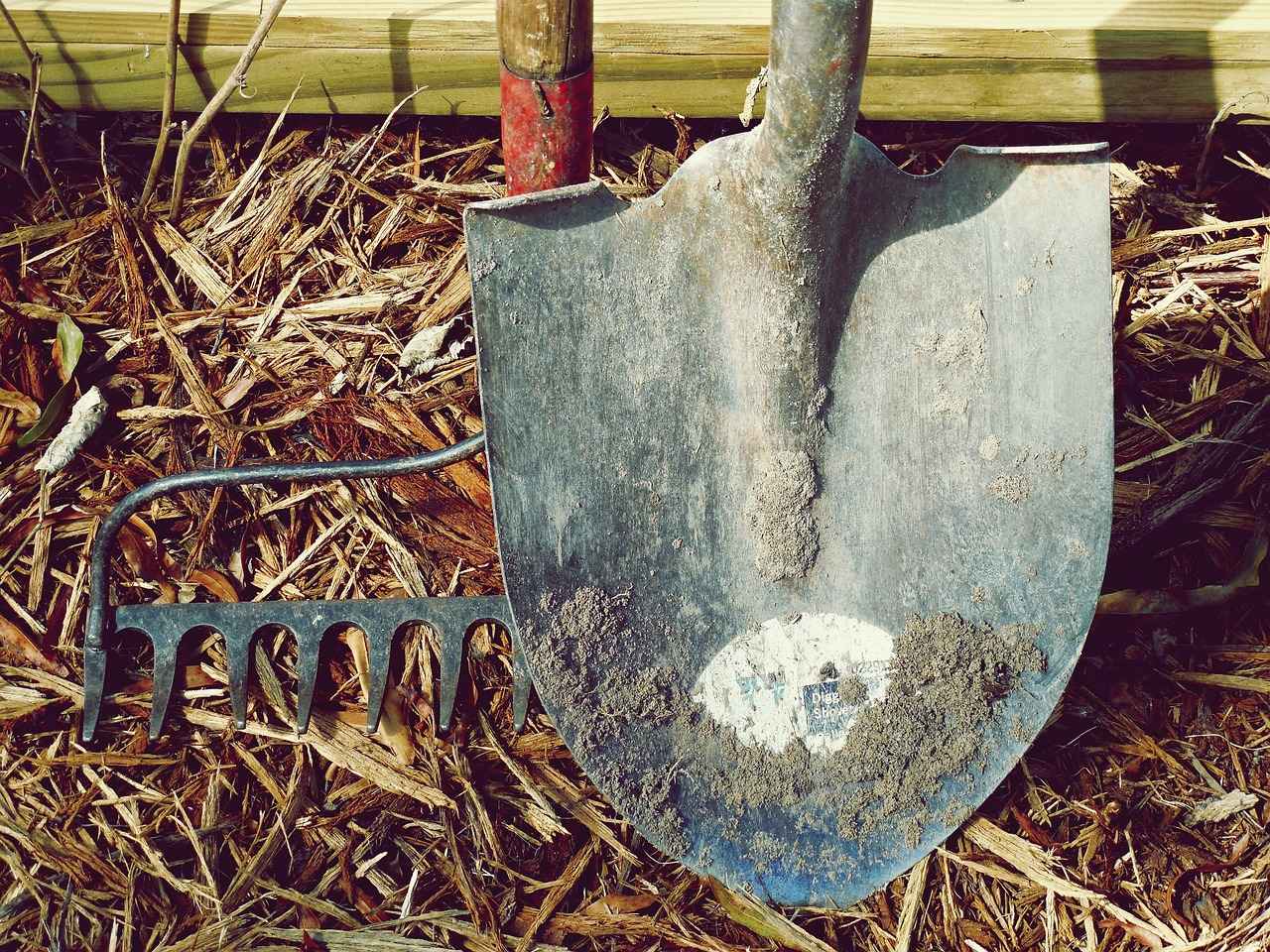
What Tools Are Essential for Jewelry Making?
Creating exquisite jewelry pieces requires not only creativity and skill but also the right tools. The tools you choose can significantly influence the quality and precision of your work, ultimately impacting the final product. Understanding which tools are essential for jewelry making will help both beginners and seasoned artisans alike in achieving their desired outcomes.
When embarking on the journey of jewelry making, it’s crucial to equip yourself with the right tools. Having the appropriate tools not only enhances the craftsmanship but also ensures safety during the creative process.
- Pliers: Essential for bending, twisting, and cutting wire. A set of round-nose, flat-nose, and chain-nose pliers is a great start.
- Cutters: Wire cutters are vital for trimming excess wire and achieving clean edges.
- Soldering Equipment: A soldering iron and solder are necessary for joining metal pieces together securely.
- Files: These are used to smooth rough edges and surfaces, ensuring a polished finish.
- Measuring Tools: Accurate measurements are crucial; invest in calipers and rulers for precision.
As you progress in your jewelry-making journey, you may want to invest in more advanced tools that can elevate your work:
- Laser Engravers: These tools allow for intricate designs and personalization, making them ideal for custom pieces.
- Polishing Machines: A polishing machine can provide a professional finish that hand polishing may not achieve.
- Bench Tools: A jeweler’s bench with a vice, anvil, and various attachments can greatly enhance your workspace efficiency.
- Ultrasonic Cleaners: These are perfect for cleaning jewelry pieces thoroughly, ensuring they shine.
When selecting tools, consider your skill level and the type of jewelry you wish to create. Beginners might prioritize affordability and basic functionality, while professionals may seek high-quality, specialized equipment that offers greater precision and durability.
Proper maintenance of your tools is essential for longevity and performance. Regularly clean your tools to prevent rust and wear. Store them in a designated space to avoid damage, and inspect them periodically for any signs of wear and tear.
In conclusion, having the right tools is not just about convenience; it is about enhancing the quality of your work and ensuring successful outcomes in jewelry making. Whether you are a novice or a professional, investing in the right tools can make a significant difference in your crafting experience.
Basic Tools for Beginners
When embarking on the journey of custom jewelry making, having the right tools is essential for success. For beginners, mastering the basics can significantly enhance creativity and craftsmanship. This section will delve into the basic tools every aspiring jewelry maker should consider, providing insights into their functions and importance in the jewelry-making process.
Starting with the right tools can make a world of difference in the quality of your jewelry pieces. Here are some essential tools every beginner should have:
- Pliers: These are crucial for bending, twisting, and cutting wire. A set typically includes round-nose pliers for loops, chain-nose pliers for gripping, and flat-nose pliers for holding and manipulating metal.
- Wire Cutters: A good pair of wire cutters is indispensable for trimming wires to the desired lengths. Look for cutters that can handle various wire gauges for versatility.
- Soldering Equipment: If you plan to join metal pieces, a soldering kit is essential. It usually includes a soldering iron, solder, and flux, allowing you to create durable connections between components.
- Beading Needles: For those who wish to incorporate beads into their designs, beading needles are helpful for threading fine threads through tiny bead holes.
- Cutting Mat: A self-healing cutting mat protects your work surface and provides a safe area for cutting materials.
- Ruler or Measuring Tape: Accurate measurements are critical in jewelry making. A ruler or measuring tape ensures precision in your designs.
- Jewelry Findings: These include clasps, jump rings, and ear wires, which are essential for completing your jewelry pieces.
Using the right tools not only enhances the quality of your creations but also boosts your confidence as a jewelry maker. Each tool serves a specific purpose that contributes to the overall process:
- Precision: Tools like pliers and cutters allow you to work with precision, ensuring that every piece fits together seamlessly.
- Safety: Using appropriate tools minimizes the risk of injury, especially when working with sharp materials or hot equipment.
- Creativity: With the right tools, you can explore various techniques and styles, allowing your creativity to flourish.
When selecting tools, consider the following factors:
- Quality: Invest in high-quality tools that will last longer and provide better performance.
- Comfort: Choose tools that feel comfortable in your hands, as you will be using them for extended periods.
- Budget: While quality is important, it’s also essential to stay within your budget. Look for starter kits that offer a good balance of quality and cost.
By starting with these basic tools, beginners can confidently create their first custom jewelry pieces. As skills develop, you can gradually expand your toolkit with more advanced equipment tailored to your specific interests and techniques.
Advanced Tools for Professional Jewelers
In the intricate world of jewelry making, the tools used can significantly impact the quality and precision of the final product. Advanced tools are essential for professional jewelers aiming to create stunning, high-quality pieces that showcase intricate details and flawless finishes. This section delves into some of the most important tools that elevate the craft of jewelry making.
Professional jewelers often rely on specialized equipment to ensure their creations stand out. Here are some of the most crucial tools:
- Laser Engravers: These machines utilize focused laser beams to engrave designs onto various surfaces with remarkable precision. Laser engraving allows jewelers to add intricate patterns, names, or messages that enhance the personalization of jewelry pieces.
- Polishing Machines: A polishing machine is vital for achieving a high-quality finish. These machines can remove scratches and imperfections from metal surfaces, providing the jewelry with a shiny, reflective appearance that catches the eye.
- Micro-Motor Tools: These versatile tools are essential for detailed work. They can be equipped with various attachments for drilling, sanding, and polishing, making them invaluable for intricate designs.
- 3D Printers: The use of 3D printing technology has revolutionized jewelry design. Jewelers can create complex models and prototypes quickly, allowing for innovative designs that were previously difficult to achieve.
- Ultrasonic Cleaners: Keeping tools and materials clean is crucial in jewelry making. Ultrasonic cleaners use high-frequency sound waves to remove dirt and grime from jewelry, ensuring that each piece is spotless before it reaches the customer.
The use of advanced tools not only improves efficiency but also enhances the overall quality of the jewelry produced. For instance, laser engravers enable jewelers to create detailed designs that would be challenging to achieve manually. This precision opens up new avenues for creativity, allowing for unique and personalized pieces that resonate with clients.
Moreover, polishing machines ensure that the final product has a professional finish, which is essential for customer satisfaction. The ability to produce jewelry that is not only aesthetically pleasing but also durable is a significant advantage in the competitive jewelry market.
Investing in advanced tools can significantly impact a jeweler’s business. High-quality tools lead to high-quality results, which can enhance a jeweler’s reputation and attract more clients. Additionally, these tools can save time and reduce labor costs, allowing jewelers to focus more on design and creativity rather than on tedious manual tasks.
Furthermore, as trends in jewelry design evolve, being equipped with the latest technology ensures that jewelers remain competitive. Embracing innovation in tools and techniques can set a jeweler apart in a crowded marketplace.
While advanced tools offer numerous benefits, they also come with challenges. For example, the initial investment can be substantial, and jewelers must be trained to use these tools effectively. Additionally, maintaining and repairing specialized equipment can require additional time and resources.
Moreover, some jewelers may find it difficult to balance traditional craftsmanship with modern technology. It is essential to find a harmonious blend that respects the artistry of jewelry making while embracing innovation.
In conclusion, the use of advanced tools in jewelry making is crucial for achieving high-quality, intricate designs. By investing in specialized equipment such as laser engravers and polishing machines, professional jewelers can enhance their craft, improve efficiency, and ultimately create stunning pieces that resonate with their clients.
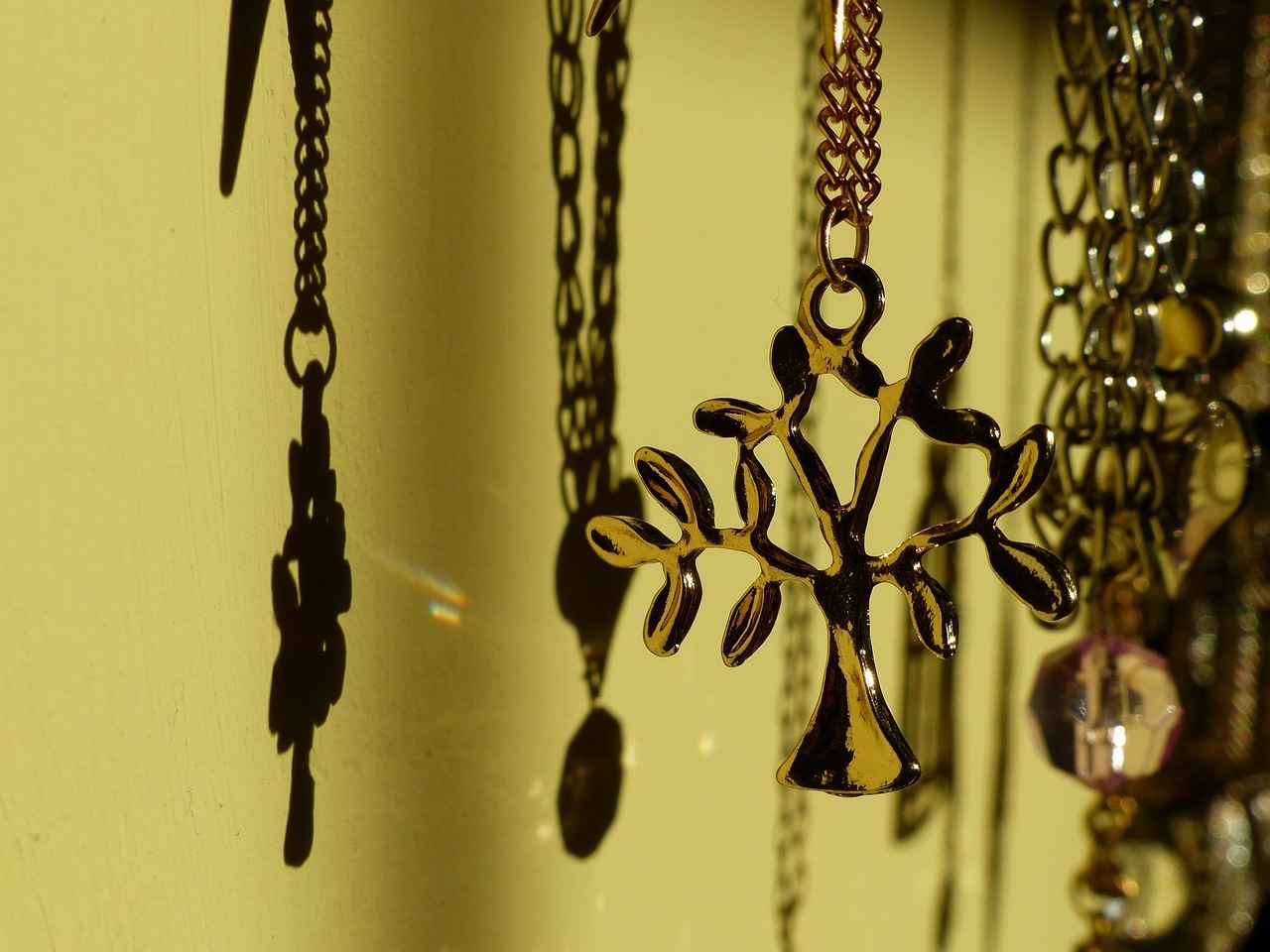
How to Care for Custom Jewelry?
When it comes to custom jewelry, the investment in both time and resources emphasizes the need for proper care. Ensuring that these unique pieces remain beautiful and retain their integrity is vital for longevity. With the right practices, you can keep your custom jewelry looking as stunning as the day you received it, allowing it to be cherished for generations.
Custom jewelry often holds significant emotional value, whether it’s a family heirloom or a unique piece designed for a special occasion. Proper care is essential to:
- Maintain the original appearance of the piece.
- Prevent damage from environmental factors.
- Enhance the longevity of materials used.
Different materials require specific cleaning methods to avoid damage. Here are some effective techniques based on the type of jewelry:
- Gold Jewelry: Use a soft cloth and mild soap solution. Avoid harsh chemicals that can strip the gold’s finish.
- Silver Jewelry: Regular polishing with a silver cloth can prevent tarnishing. For deeper cleaning, a mixture of baking soda and water can be effective.
- Gemstone Jewelry: Depending on the gemstone, use specific cleaning methods. For instance, pearls should be wiped with a damp cloth, while harder stones like diamonds can be cleaned with a gentle soap solution.
Proper storage is just as important as cleaning. Here are some tips to ensure your jewelry remains in excellent condition:
- Use Soft Pouches: Store each piece in a soft cloth or pouch to prevent scratches.
- Avoid Humidity: Keep your jewelry in a dry place, as humidity can lead to tarnishing and damage.
- Separate Storage: Store different types of jewelry separately to avoid tangling and scratching. For example, keep necklaces and bracelets in separate compartments.
To maximize the lifespan of your custom jewelry, be aware of these common pitfalls:
- Wearing Jewelry During Activities: Remove jewelry before exercising, swimming, or engaging in other activities that could cause damage.
- Using Abrasive Cleaners: Avoid harsh chemicals and abrasive materials that can scratch or damage the surface.
- Ignoring Regular Maintenance: Schedule regular professional cleanings for intricate pieces to ensure they remain in top condition.
Preventive measures can significantly enhance the durability of your jewelry. Consider these protective strategies:
- Regular Inspections: Periodically check for loose stones or signs of wear and tear.
- Insurance: Consider insuring valuable pieces to protect against loss or damage.
- Professional Cleaning: Seek professional cleaning services annually to maintain the integrity of your jewelry.
By implementing these care techniques, you can ensure that your custom jewelry remains a vibrant part of your life for years to come. Remember, the effort you put into caring for your jewelry today will pay off in the long run, preserving its beauty and sentimental value.
Cleaning Techniques for Different Materials
When it comes to custom jewelry, maintaining its beauty and integrity is essential for preserving its value. Different materials require specific cleaning methods to avoid damage, ensuring that custom pieces remain in pristine condition. Understanding the appropriate cleaning techniques for various materials can significantly enhance the longevity of your jewelry.
Jewelry is often subjected to daily wear and tear, which can lead to dirt accumulation, tarnishing, and even scratches. Regular cleaning not only keeps your pieces looking beautiful but also prevents potential damage that could compromise their structure and design.
Different materials require tailored cleaning approaches. Below are some common materials used in custom jewelry and the best practices for cleaning each:
- Gold Jewelry:
- Use a mixture of warm water and a few drops of mild dish soap.
- Soak the jewelry for about 15 minutes and gently brush with a soft toothbrush.
- Rinse thoroughly with clean water and dry with a soft cloth.
- Silver Jewelry:
- To clean silver, use a silver polishing cloth or a mixture of baking soda and water to form a paste.
- Gently rub the paste on the silver, then rinse and dry completely.
- Avoid using harsh chemicals that can tarnish the silver further.
- Gemstone Jewelry:
- For gemstones, it’s crucial to know the specific type of stone as some are more delicate than others.
- Generally, warm soapy water is safe, but avoid soaking porous stones like opals or pearls.
- Use a soft cloth to wipe them down after wearing.
- Pearl Jewelry:
- Pearls are sensitive to harsh chemicals and should be cleaned with a damp cloth after each wear.
- Occasionally, use a mild soap solution to gently clean them, ensuring they are dried thoroughly afterward.
- Stainless Steel Jewelry:
- Stainless steel is quite durable and can be cleaned using warm soapy water and a soft cloth.
- For tougher stains, a mixture of vinegar and baking soda can be effective.
In addition to cleaning, proper care and storage are vital for maintaining your jewelry:
- Storage: Store jewelry in a soft pouch or a lined box to prevent scratches and tangling.
- Avoid Exposure: Keep jewelry away from harsh chemicals, perfumes, and lotions that can cause damage.
- Regular Inspections: Periodically check for loose stones or signs of wear to address any issues before they worsen.
By following these cleaning techniques and care tips, you can ensure that your custom jewelry remains a cherished part of your collection for years to come. Remember, each piece is unique, and understanding how to care for it is key to preserving its beauty and value.
Storage Tips for Longevity
When it comes to preserving the beauty and value of your custom jewelry, proper storage is essential. Many jewelry enthusiasts overlook this crucial aspect, but taking the time to store your pieces correctly can significantly extend their lifespan. Here are some important tips to ensure your treasured items remain in pristine condition.
Proper storage is vital to prevent scratches and tarnishing, which can diminish the appearance of your jewelry over time. Exposure to air, moisture, and other elements can lead to unwanted damage. By following effective storage practices, you can help maintain the integrity and aesthetic appeal of your pieces.
- Necklaces: Store necklaces flat or hang them to avoid tangling. Use a necklace organizer or a soft pouch to keep them separate.
- Earrings: Keep pairs together in a designated earring holder or small boxes to prevent loss and scratches.
- Rings: Use a ring box or a soft cloth pouch to keep rings safe from scratches and to avoid them getting tangled with other pieces.
- Bracelets: Store bracelets in a separate compartment or a soft-lined box to prevent them from scratching against one another.
Choosing the right storage materials can make a significant difference in preserving your jewelry. Consider the following options:
- Anti-tarnish pouches: These specialized pouches help prevent tarnishing, especially for silver jewelry.
- Soft cloths: Use soft, lint-free cloths to wrap individual pieces, reducing the risk of scratches.
- Jewelry boxes: Invest in a quality jewelry box with separate compartments to keep pieces organized and protected.
Location matters when it comes to jewelry storage. Avoid places with high humidity, like bathrooms, as moisture can lead to tarnishing. Instead, consider these options:
- Bedroom drawers: A cool, dry drawer is an excellent choice for jewelry storage.
- Safe or lockbox: For valuable pieces, a safe can offer added protection from theft and damage.
Regularly inspect your jewelry for any signs of damage or tarnishing. It’s advisable to check your pieces every few months. This practice allows you to address any issues promptly, ensuring your jewelry remains in excellent condition.
In addition to proper storage, consider these care techniques:
- Cleaning: Regularly clean your jewelry according to the specific material guidelines to maintain its shine.
- Avoid exposure: Remove jewelry before engaging in activities that may cause damage, such as exercising or swimming.
In conclusion, taking the time to store your custom jewelry properly can prevent scratches and tarnishing, helping to preserve its beauty and value over time. By following these tips and techniques, you can ensure that your cherished pieces remain stunning for years to come.
Frequently Asked Questions
- What materials are best for custom jewelry?
When it comes to custom jewelry, precious metals like gold, silver, and platinum are top choices due to their durability and aesthetic appeal. Additionally, high-quality gemstones can add a unique flair to your designs.
- How do I choose the right gemstone?
Selecting the right gemstone involves considering factors like color, meaning, and quality. Popular options include sapphires for loyalty and rubies for passion. Don’t forget to weigh the differences between lab-created and natural gemstones!
- What tools do I need to start making jewelry?
For beginners, essential tools include pliers, cutters, and a basic soldering kit. As you advance, you might want to invest in specialized tools like laser engravers for intricate designs.
- How should I care for my custom jewelry?
To keep your jewelry looking its best, clean it regularly using appropriate methods for each material. Also, store your pieces in a soft pouch or a jewelry box to prevent scratches and tarnishing.
- What is the difference between handcrafted and machine-made jewelry?
Handcrafted jewelry offers a unique, personalized touch, while machine-made pieces provide precision and consistency. Your choice depends on whether you value artistry or perfection.
